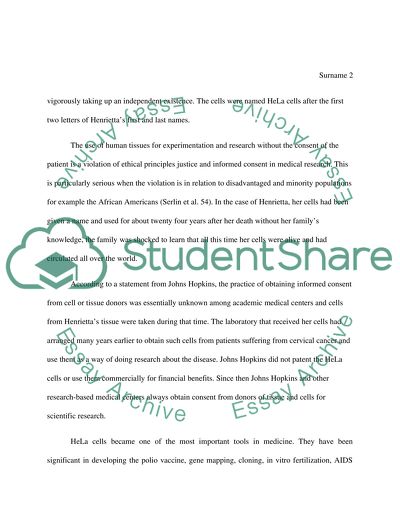Cite this document
(“The Immortal Life of Henrietta Lacks Essay Example | Topics and Well Written Essays - 1250 words”, n.d.)
Retrieved from https://studentshare.org/health-sciences-medicine/1397856-research-paper
Retrieved from https://studentshare.org/health-sciences-medicine/1397856-research-paper
(The Immortal Life of Henrietta Lacks Essay Example | Topics and Well Written Essays - 1250 Words)
https://studentshare.org/health-sciences-medicine/1397856-research-paper.
https://studentshare.org/health-sciences-medicine/1397856-research-paper.
“The Immortal Life of Henrietta Lacks Essay Example | Topics and Well Written Essays - 1250 Words”, n.d. https://studentshare.org/health-sciences-medicine/1397856-research-paper.


